
Large liturgical modification of the České Budějovice cathedral
Last week, a new altar mensa (table of the Lord - mensa Domini) was installed in St. Nicholas Cathedral. As part of the major liturgical redesign of this cathedral and the multitude of works and changes taking place here, it is the cornerstone of all these changes.
The altar mensa, also known as the table of the Lord (mensa Domini), is the main, essential part of the altar in Christian churches, characterizing the altar as a place of sacrifice.
The introduction of modern architecture into a historical building is always a very sensitive and serious matter. This is also the case with the cathedral in České Budějovice. This cathedral is one of the few temples that have been very frequently remodeled internally. The last alteration from 1969-72 opened the way for the current historical through its radical approach. The author of the new significant liturgical redesign is the Moravian architect Marek Jan Štěpán, who systematically engages with sacred architecture through his studio. He was selected based on a competition invited by the Diocese of České Budějovice.
The author adds regarding the redesign of the cathedral: "I was actually inspired by the geometric structure of the vault of this cathedral. I perceive it as a view into the distances (or depths) of abstract thinking and beyond them to other horizons, to the heavens and hope. I have tried to imprint a piece of this experience into the material of the new interior of the cathedral. Its liturgical focus and geometric thoughtful quintessence is newly represented by a large circular altar table made of Carrara marble. The mensa has a geometrically clear shape created by the intersection of five cylinders. This principle is very close to the early Baroque understanding of space - that is, the surrounding one."
The six-ton mensa stands at the front focal point of the newly defined oval step also made of Carrara marble along the longitudinal axis of the cathedral. Its position is additionally supported by a ring inscription "Whenever you eat this bread and drink this cup, you proclaim the Lord's death until he comes. (1 Cor, 11/26)" in the floor. This new focal point of the space, due to its cylindrical and visually aerodynamic shape, does not divide the space in front of it and behind it; rather, it supports the unity of the surrounding liturgical space, which envelops it in the historical structure of the cathedral.
The symbolism of this altar table has several layers of reading, some targeted, some rather poignant. In the words of philosopher Walter Warnach, "a work of art possesses a dimension that approaches as something entirely new, secretly guides the creative process, even though the clearest consciousness operates within it and leads to a completion that stands indefinably higher than what the artist himself brought into the work."
The altar mensa, also known as the table of the Lord (mensa Domini), is the main, essential part of the altar in Christian churches, characterizing the altar as a place of sacrifice.
The introduction of modern architecture into a historical building is always a very sensitive and serious matter. This is also the case with the cathedral in České Budějovice. This cathedral is one of the few temples that have been very frequently remodeled internally. The last alteration from 1969-72 opened the way for the current historical through its radical approach. The author of the new significant liturgical redesign is the Moravian architect Marek Jan Štěpán, who systematically engages with sacred architecture through his studio. He was selected based on a competition invited by the Diocese of České Budějovice.
The author adds regarding the redesign of the cathedral: "I was actually inspired by the geometric structure of the vault of this cathedral. I perceive it as a view into the distances (or depths) of abstract thinking and beyond them to other horizons, to the heavens and hope. I have tried to imprint a piece of this experience into the material of the new interior of the cathedral. Its liturgical focus and geometric thoughtful quintessence is newly represented by a large circular altar table made of Carrara marble. The mensa has a geometrically clear shape created by the intersection of five cylinders. This principle is very close to the early Baroque understanding of space - that is, the surrounding one."
The six-ton mensa stands at the front focal point of the newly defined oval step also made of Carrara marble along the longitudinal axis of the cathedral. Its position is additionally supported by a ring inscription "Whenever you eat this bread and drink this cup, you proclaim the Lord's death until he comes. (1 Cor, 11/26)" in the floor. This new focal point of the space, due to its cylindrical and visually aerodynamic shape, does not divide the space in front of it and behind it; rather, it supports the unity of the surrounding liturgical space, which envelops it in the historical structure of the cathedral.
The symbolism of this altar table has several layers of reading, some targeted, some rather poignant. In the words of philosopher Walter Warnach, "a work of art possesses a dimension that approaches as something entirely new, secretly guides the creative process, even though the clearest consciousness operates within it and leads to a completion that stands indefinably higher than what the artist himself brought into the work."
The English translation is powered by AI tool. Switch to Czech to view the original text source.
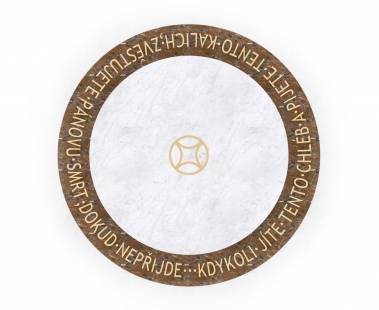
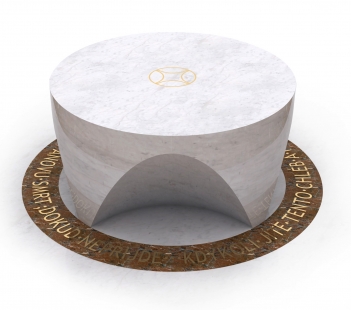
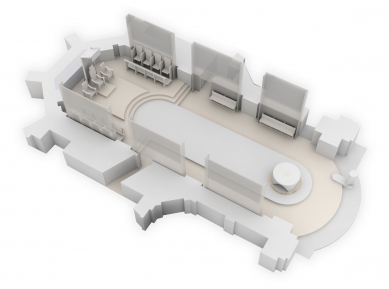
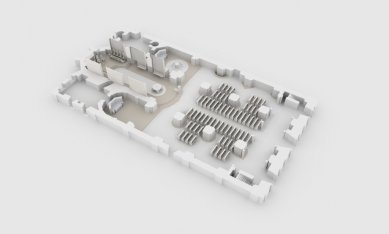
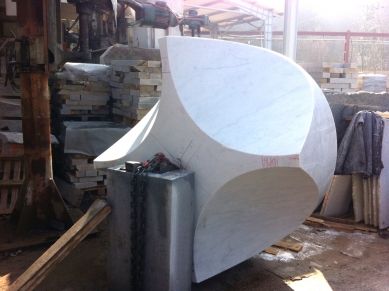
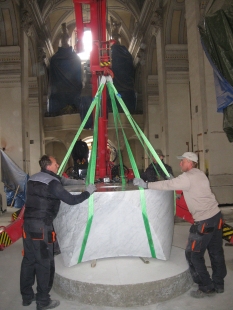
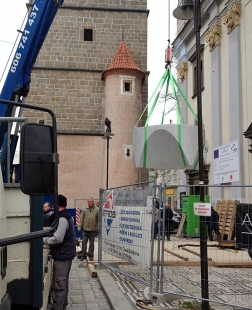
0 comments
add comment









